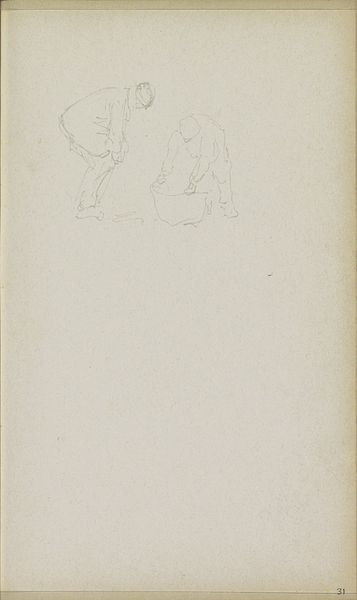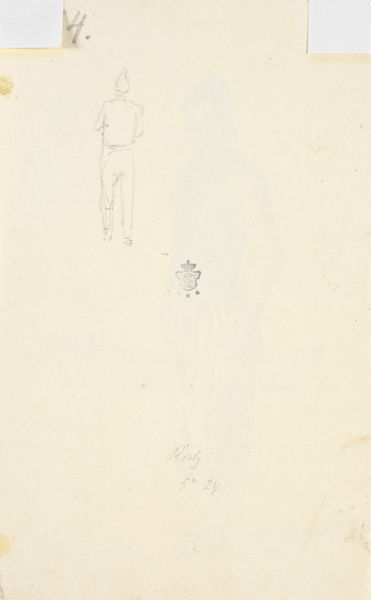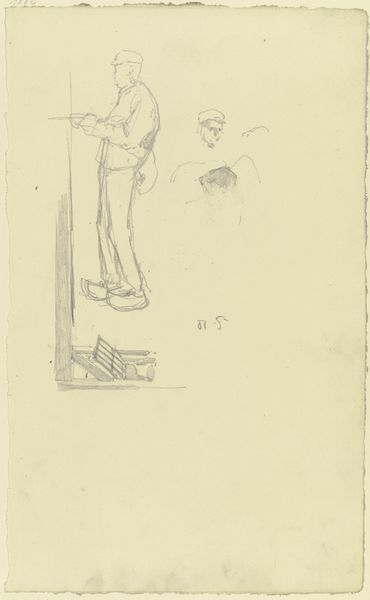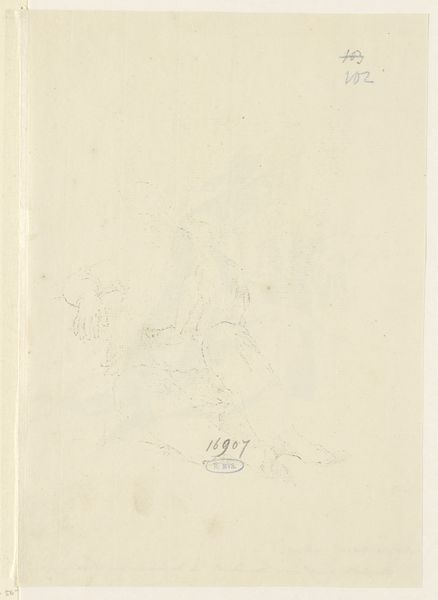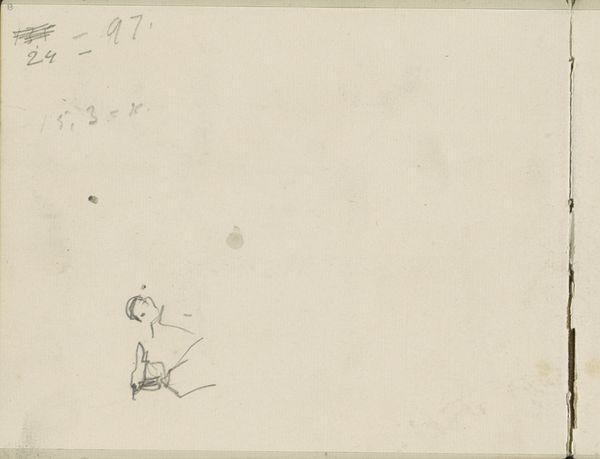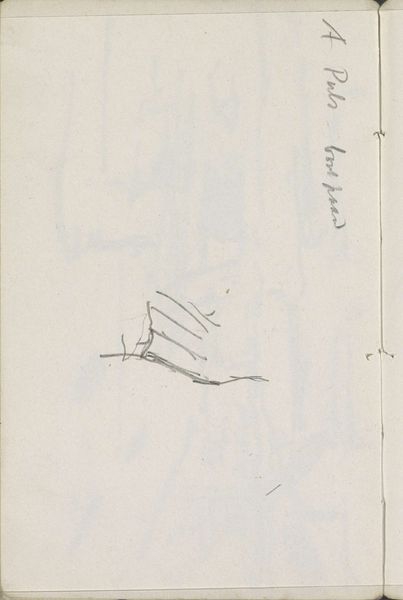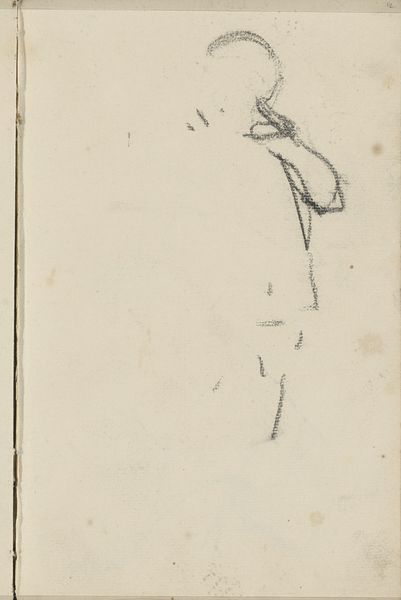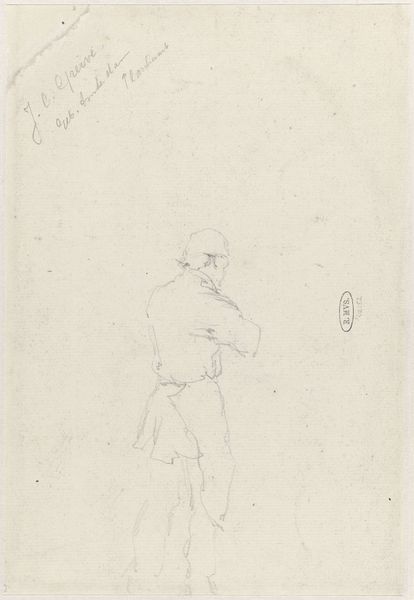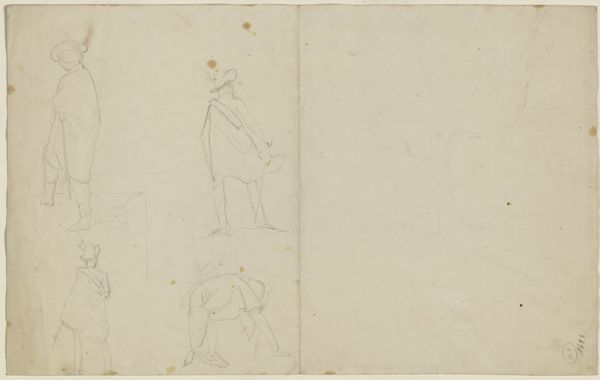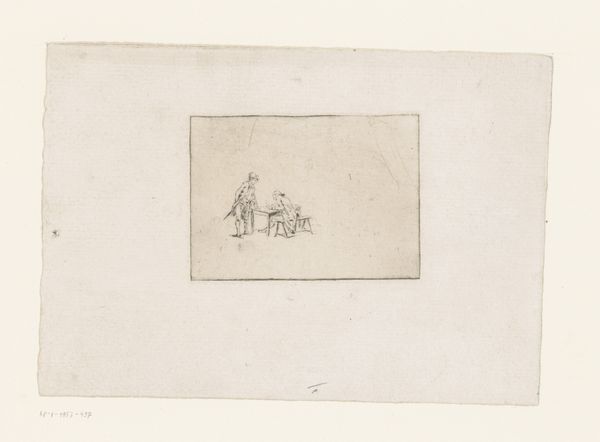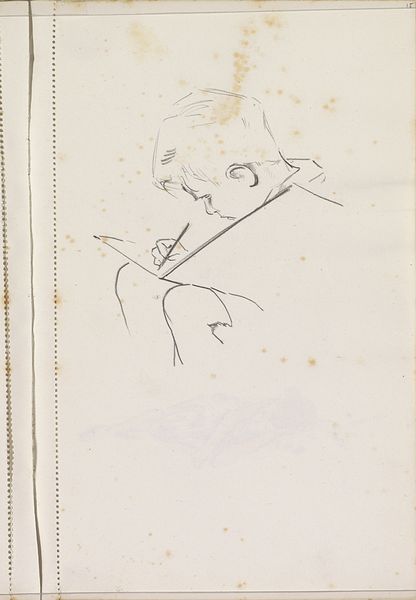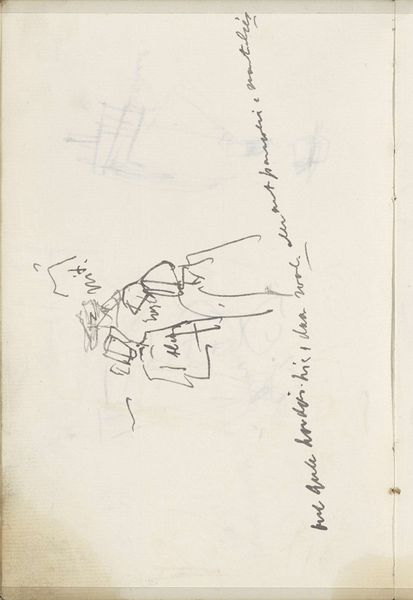
drawing, pencil
#
portrait
#
drawing
#
figuration
#
romanticism
#
pencil
Dimensions: 218 mm (height) x 142 mm (width) (bladmaal)
Curator: This is a pencil drawing by Martinus Rørbye titled "Blyantsskitse af stående mand set bagfra," created in 1834. It currently resides here at the SMK, the National Gallery of Denmark. Editor: There's an undeniable feeling of isolation. He stands with his back turned, literally obscuring his identity. The empty space surrounding him amplifies that sense of detachment, like a figure exiled to the edge of the world. Curator: Indeed. We see this romantic yearning mirrored in Rørbye’s larger body of work, reflecting broader anxieties around masculinity and individual agency within early 19th-century Danish society, especially concerning exploration and national identity. This figure is presented alone, a subtle rebellion against societal expectations, and it also fits in a trajectory to reflect on the human form within that cultural era. Editor: And that specific posture – back turned, head slightly bowed – resonates deeply. It transcends just Danish society; it’s a universally recognizable gesture. He seems to embody contemplation or perhaps a quiet submission, almost echoing the weight of existential pondering throughout art history. What would it mean to the history of Danish artists if the turn of the body implied something symbolic of leaving tradition behind? Curator: I think what might surprise audiences about Romanticism as seen here through the work of Rørbye is his engagement with realism. Though clearly idealized, this drawing grounds his subject in identifiable realities – of Danish menswear, class status, through a sense of individual identity that seems incredibly fresh and present despite being over 150 years old. Editor: Ultimately, isn’t the symbol of this work what it reveals about universal solitude, no matter the culture? The man, no face, the unknown explorer and wanderer... These have a psychological hold beyond historical context, tapping into archetypes of identity throughout time. Curator: Absolutely. Rørbye's sketch invites us to look backwards through time and into ourselves as cultural actors; his focus allows us to consider how even a simple depiction of the human form reveals cultural narratives of Danish history. Editor: It's a fascinating convergence - an individual reflection intersecting with the threads of universal, human longing and a symbol of that exact place in that specific point in time.
Comments
No comments
Be the first to comment and join the conversation on the ultimate creative platform.
